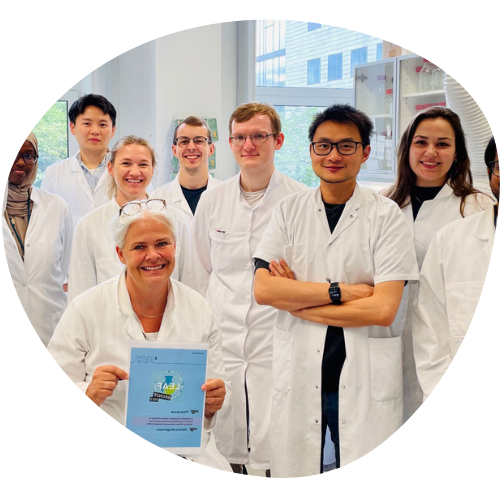Green Labs: Saving costs and the climate
Photo: Copenhagen University

A typical research institution will have 60-65% of its electricity consumed by research spaces. How do we reduce that?
Problem
Can you claim to research for the solutions to the world’s problems when the process of getting there is as energy intensive as the solutions you are trying to avoid? Research labs at University of Copenhagen have decided to do something about it.
Research spaces consume 3-10 times more energy per square meter than academic spaces. A typical research institution will have 60-65% of its electricity consumed by research spaces, and University of Copenhagen has a target of reducing the CO2 footprint per employee by 50% in 2030, so what to do?
Research spaces consume 3-10 times more energy per square meter than academic spaces. A typical research institution will have 60-65% of its electricity consumed by research spaces, and University of Copenhagen has a target of reducing the CO2 footprint per employee by 50% in 2030, so what to do?
“The transition of our society and consumption to sustainability requires massive change. This also accounts for University of Copenhagen, whose 9500 employees and 37,500 students have a considerable climate and resource footprint. We need to solve the climate and sustainability issues facing the international community. And the universities' active commitment plays a key role. UCPH assumes co-responsibility for supporting a sustainable development – both internally and externally.”
- University of Copenhagen
Solution
As the first in Scandinavia, University of Copenhagen has joined the University College London-founded initiative called the Laboratory Efficiency Assessment Framework (LEAF for short). Developed by lab specialists, LEAF estimates the carbon and financial savings of your actions, helping you target your efforts and show your impact.
According to a pilot study with 235 LEAF-certified labs, they saved both money and emissions by applying the framework. In total, they reduced their emissions by 648 tons of CO2.
More than 1200 researchers and laboratory workers from University of Copenhagen are involved in applying the framework, which more than 70 public research institutions in more than 10 countries are already using. Novo Nordisk pioneered the corporate world and introduced the triple bottom line into its company bylaws more than 25 years ago. Adhering to the triple bottom line means that the company must conduct its business in a socially, environmentally, and financially responsible way. But when you produce hundreds of millions of injection pens, and they end up on landfills all over the world, you are faced with a hard-core challenge to live up to the mission.
Part of the solution is circularity which will help reach the target of net zero emissions across the entire value chain by 2045.
Setting up your business in the Greater Copenhagen
Setting up your company in the Greater Copenhagen region gives you access to a world-class research ecosystem and laboratories that will help your business succeed in the future.
Interested in knowing more about the Danish research ecosystem and the opportunities for your business? Please feel free to contact Copenhagen Capacity today.
Niels Thun Andersen
Head of Life Science Team
Copenhagen Capacity

E-mail: nta@copcap.com